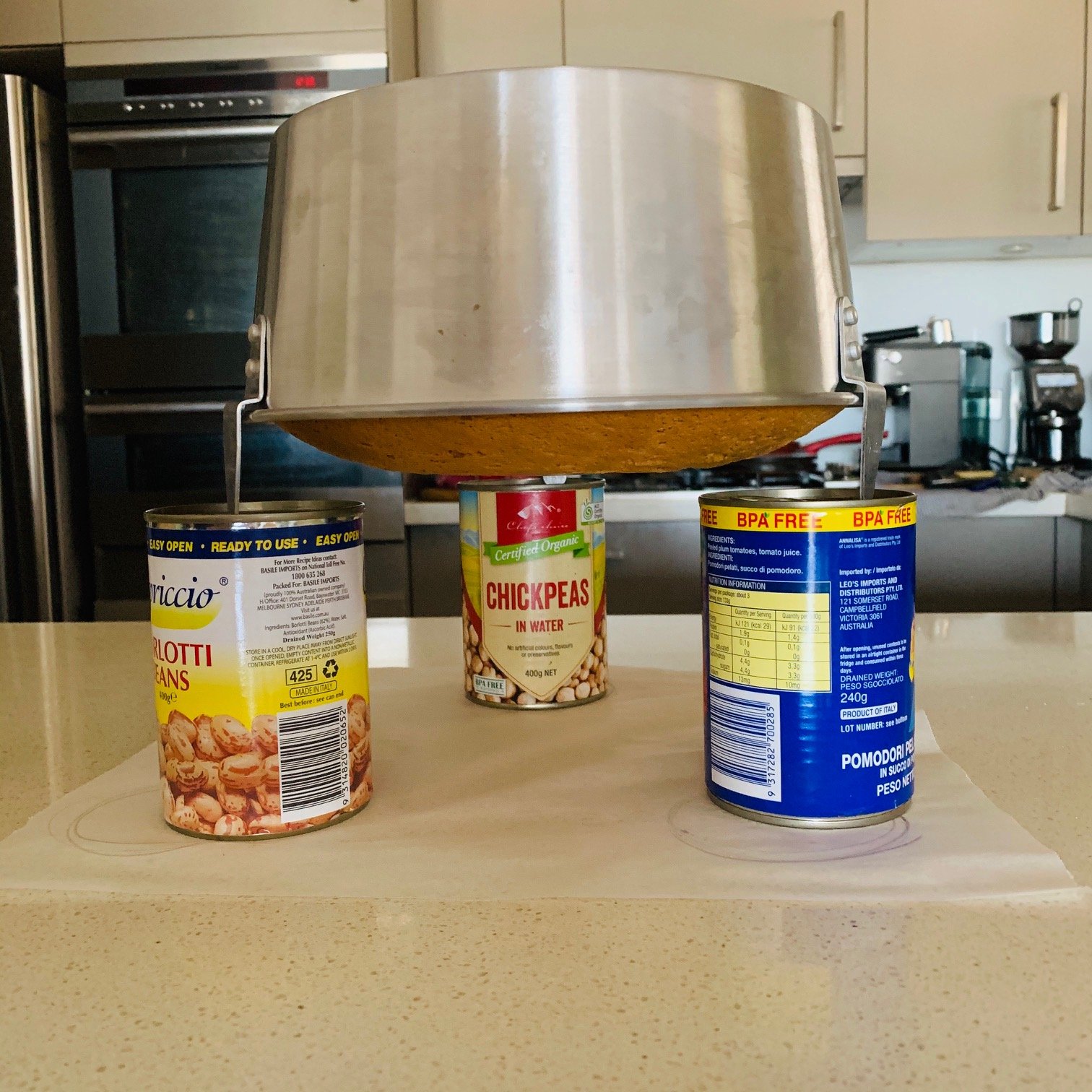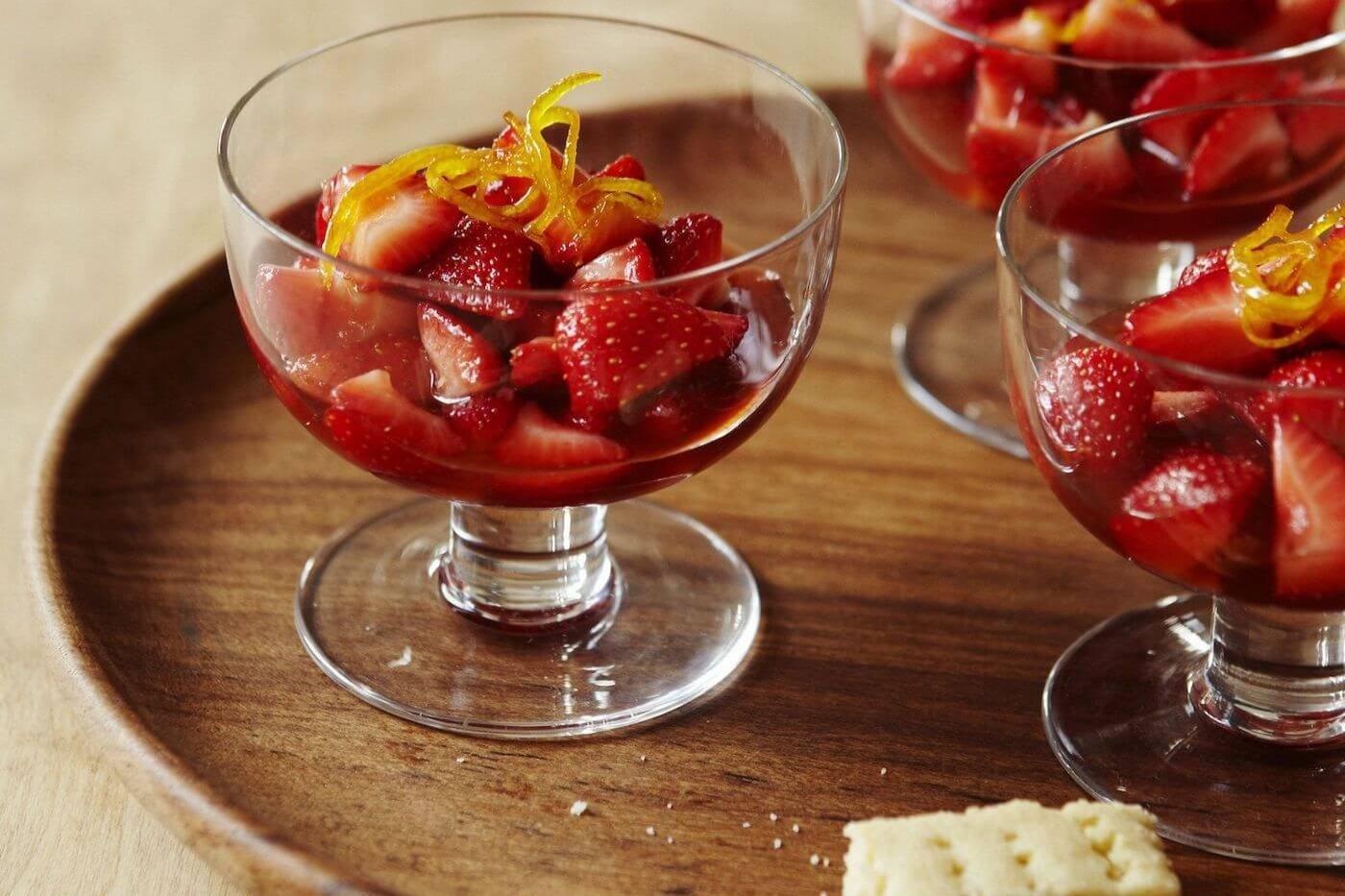Advertisement
Consuming Passions: Cake Tins
8 May 2024 · Consuming passions
Consuming Passions don’t have to be about ingredients – there are plenty of other items in the kitchen that can stoke fires of passion. We asked Sydney-based food writer Jill Dupleix to tell us about her own consuming passion for… cake tins.
By Jill Dupleix

The cake tin is a means to an end. Practical and sturdy, it is there simply to lead to greater things. This is why I like it so much. The materials are sensible and heat-conducting, and the shapes are fit for purpose – a heart for St Valentine’s Day, a round cake tin with two smaller ear tins for Mickey Mouse.
The number of cake tins you have in the kitchen will depend on how often you bake, and at what stage you have reached in the baking trajectory of your life. By standing on a chair and opening the baking cupboard, I just did a quick inventory.:
Round cake tins: 7
Square cake tins: 2
Heart-shaped cake tins: 2
Loaf tins: 4
Muffin tins: 3
Madeleine tins: 2
Lamington/slice tins: 2
Chiffon (angel food) cake tin: 1
That makes 23, I think!
The number of shapes you have is generally associated with the number of birthday cakes you have baked.
You can buy tins in the shape of butterflies, train and castles. Unicorns and mermaids. There’s even a very clever one that takes the shape of a T-shirt, ready for you to inscribe with whatever you like. Then there are specialty cake tins. Fallen in love with madeleines? There’s a tin for that (and a whole bookful of madeleine recipes to fill it with). Buttery, soft little financiers? There’s a tin for that, too.
SPRINGFORM OR SILICONE?
I’m a big fan of the classic, round springform pans, with a removable base that locks into place with a clasp on the side. It comes with the security of knowing you don’t have to turn the cake upside down to remove it, which is nice. As long as you don’t attach the base upside-down (it has happened) which will cause leakage. Nobody wants leakage.
As yet, I haven’t been able to get my head around using silicone pans - they just feel too floppy, and make me feel insecure – but friends swear by them.
A good loaf tin is extremely handy; good for banana bread, madeira cake, babka, and of course, bread, for those who might like to take a rest from all that cake.
It’s an extremely clever solution to the problem of baking a large cake. By placing the funnel in the middle, there is no “middle” of the cake that needs to be cooked through. As a result, a bundt cake will cook more evenly, and knock a good 10 minutes or so off an equivalent cake baked in a standard tin.
It also has a great back story. When H. David Dalquist got home from the Second World War to Minnesota, USA, he began manufacturing small household items from cast aluminium under the brand Nordic Ware.
In the 1950s, a group of local women asked him to create a large cake tin they called a bund kuchen - a party cake, or gathering cake. Bund means bond, or alliance, in German. He did so, they were delighted, and the bundt was born again, in its new country. (We think he added the t on the end in order to copyright the name).
Sales were slow and steady until Ella Helfrich from Texas placed second in the 17th Annual Pillsbury Bake-off in 1966 with her Tunnel of Fudge cake, baked in Nordic Ware’s bundt tin. Kapow, demand took off, and they have now produced seventy million bundt pans. Seventy million!
There are now many variations on the original high-shouldered, fluted theme, but all have the central tube. Mine is called the Jubilee, a pattern of crenellated ridges, diamonds and rings that look beyond architectural, as if created by AI.
It’s adorable, but it initially freaked me out, because I thought I’d never be able to remove the cake from such a vicious playground of shapes. But I did my due diligence, and brushed the insides extremely nerdily with butter, dusted lightly with flour and shook off the excess (this helps to define the edges and angles), and the cake practically threw itself out of the tin when I turned it upside down.
The cast aluminium conducts and holds the heat so well, that the cake gently leaves the sides when it is sufficiently cooked, like a cruise ship slowly moving away from the pier.
Tip: Once you have filled the tin three-quarters full of batter, gently tap it on the counter, to burst any air bubbles in the batter.

ckbk includes dozens of bundt cake recipes. Here is Burnt Sugar Bundt Cake with Caramel Rum Frosting from Baked Explorations by Matt Lewis and Renato Poliafito
SPECIALTY TIN: THE CHIFFON
ALSO KNOWN AS ANGEL FOOD, OR PANDAN CAKE TIN
The chiffon cake tin is super-tall, again with a central funnel. The design enables the cake to rise high in the pan, creating one of the lightest, fluffiest, most tender-crumbed cakiest cakes in the world of cake.
Technically known as a foam cake, it has a high ratio of well-beaten eggs to flour, and is as rich as butter cake, but as light as sponge.
Here’s the scary bit: Those three little metal things sticking out of the top of the tin? They become legs when you turn the cake upside-down on taking it from the oven. Turning the cake upside down to cool enables the egg proteins to stretch, resulting in an exceptionally light, tender crumb. (Same trick the Italians use for panettone).
Tips: Prior to baking, set up a bench area with three same-height cans so that you can rest the tin’s three little metal legs on them.

A chiffon cake, turned upside to cool. ckbk has more than 80 different chiffon cake recipes including pandan cake
Final tips: don’t ever grease the cake tin, as the batter needs to grip the walls of the pan in order to achieve its impressive height and ethereal lightness. Also, cut the cake with a serrated knife; a normal blade will squish the cake down.

Cannelé from Lamingtons & Lemon Tart by Darren Purchese

Bananas Foster Savarin with Crème Mousseline from Blackbird Bakery Gluten-Free by Karen Morgan

Apple Charlotte from Paul Bocuse: Simply Delicious by Paul Bocuse
CAKE TIN FEEDBACK FROM AROUND THE WORLD
When I wrote recently about cake tins on my Substack, the comments were delightful and illuminating:
Maria wrote:
“My excuse for owning so many is that quite a few are my mum’s, which I can’t bear to part with (including a fish-shaped tin for salmon mousse, that I made a couple of times in the 80s). Hopefully my daughter will want some of her grandmother’s tins, and some of mine one day”.
Jan wrote:
“My mother often made nut loaf, but she used a soup tin with both ends removed. And among my cake tins is a Soldier's Cake Tin made by Willow (in Australia) during WWII. It had a tight-fitting lid so the cake it contained could be mailed to a soldier serving overseas. The one I tracked down still had sticky tape marks suggesting it had made at least one long journey.”
Naughty Diana recalled:
“When I was about eight, I "borrowed" the bundt tin to make a mud cake. Quite literally: made the mud in the back yard, packed the tin full and stuck it in the oven. The cake was not a success, partly because it just shrivelled up and cracked, and partly because my mother was extremely displeased. I spent the rest of the day in my room.”
But Catie’s comment takes the cake (ha!)
“Dear Jill, I’ve been making your date and walnut loaf [from Old Food] in old-fashioned tube tins for many years. The loaves are easily made vegan-friendly (I have many vegan friends) by substituting [plant-based] Nuttelex for butter — it doesn’t impact the flavour negatively as there is only a tablespoon.
I have far too many cake tins (dating from my now-adult kids’ memorable birthday parties) but am thrilled to work for a library service that now lends them to our patrons!”
That is SUCH a good idea, and we should all suggest it to our local libraries forthwith. Why should a cake tin gather dust in a cupboard when it could be out there going from home to home, spreading joy, building community, and creating beautiful cakes wherever it goes? If this takes off, a more peaceful, compassionate, cake-eating world cannot be far behind.”
Jill Dupleix is an Australian food writer and former Cookery Editor of The Times, now living back in Sydney. A classic multi-tasker, she reviews restaurants, acts as culinary editor of the Australian Financial Review Magazine, writes a weekly recipe blog, and has authored 16 cookbooks, several of which are available in full on ckbk. She also proudly serves on the Board of the National Indigenous Culinary Institute.
More Consuming Passions
Rose water and orange flower water were displace by vanilla, but are worth rediscovering, writes Glynn Christian
Sam Bilton on the history and use of the world’s most precious spice
Bruce McMichael on the pink and juicy delights of forced rhubarb
Sign up for ckbk's weekly email newsletter
Advertisement











